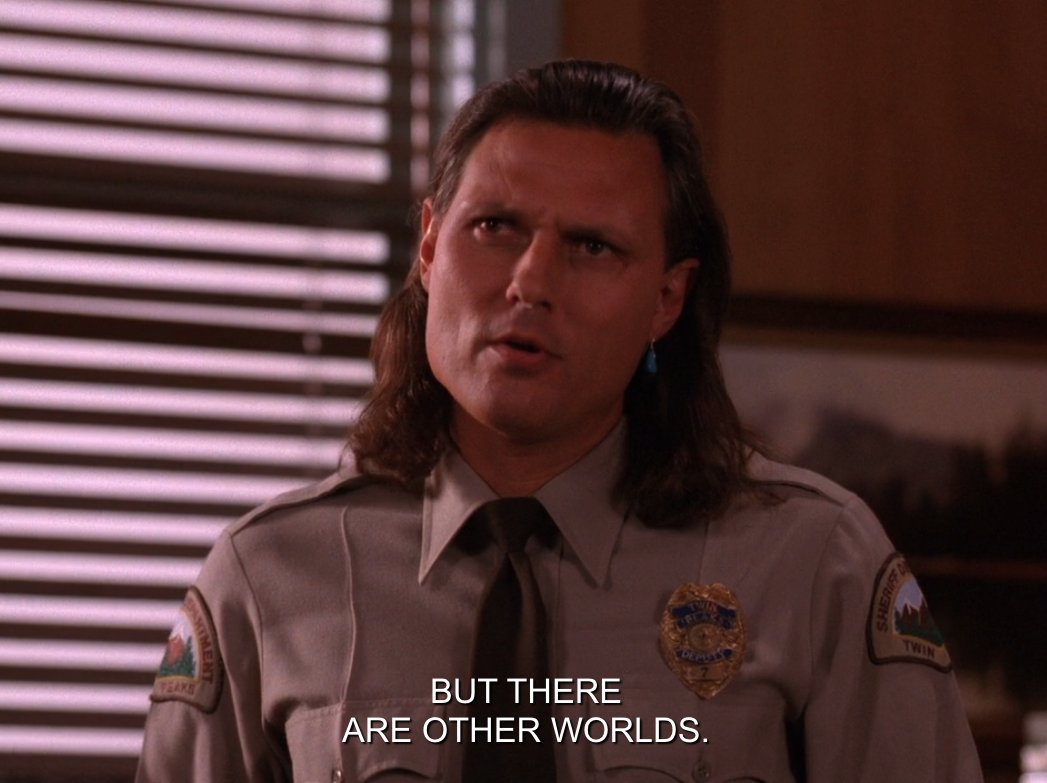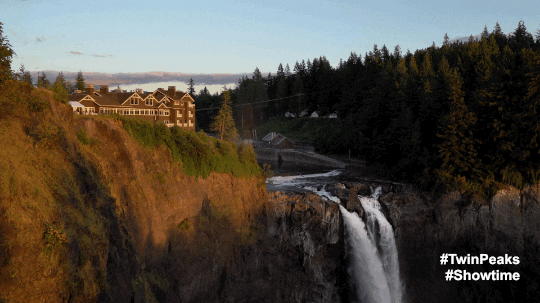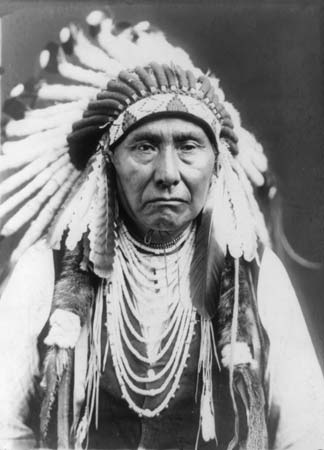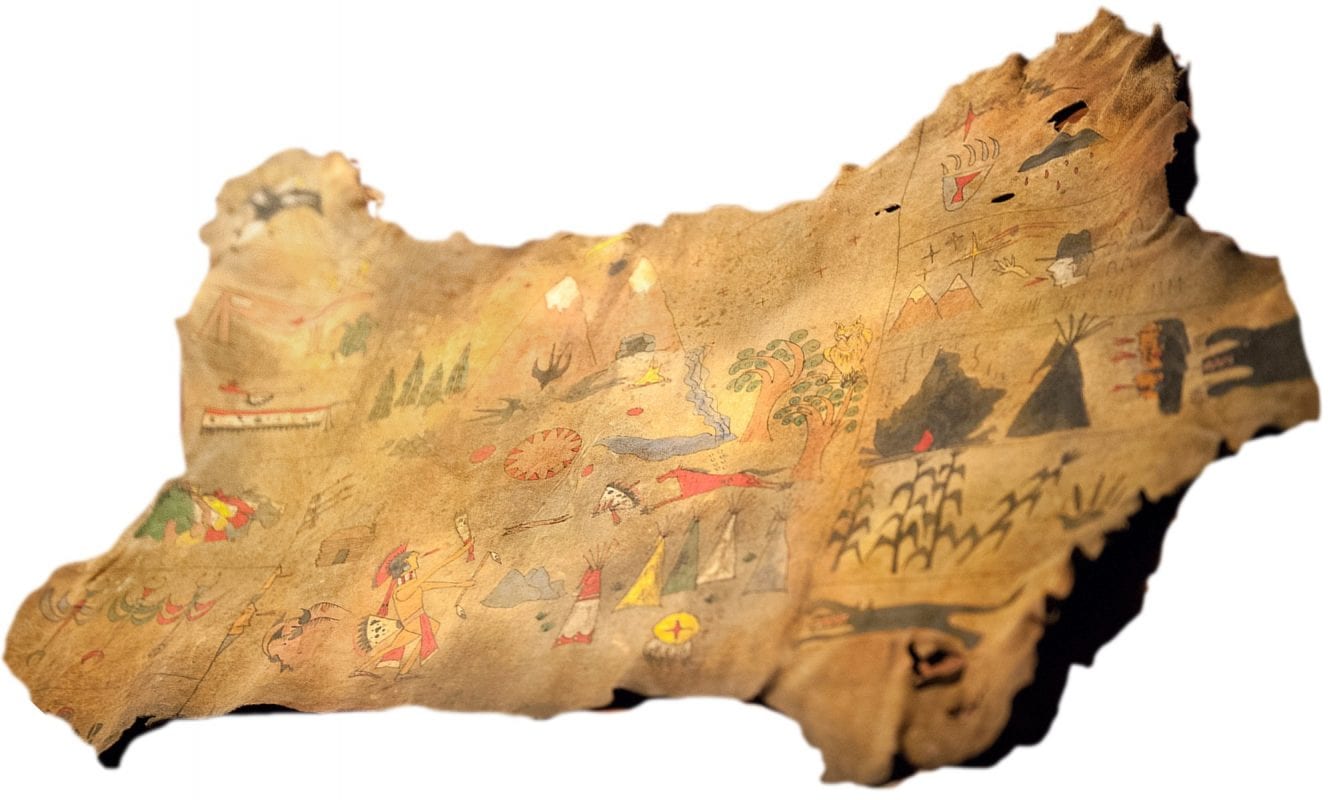When I first skimmed through the contents of The Secret History of Twin Peaks and saw that the entire first section of more than 30 pages (8–39) was dedicated to the Lewis and Clark Expedition my initial reaction was, “What the hell does this have to do with Twin Peaks?” The next section on the Nez Perce (41–57) made more sense to me given the (admittedly limited) Native American presence on the original series. Deputy Tommy “Hawk” Hill is, after all, Nez Perce and would occasionally speak of native spirituality and legends. He was also the first character shown to have some knowledge of the Lodges.

But even given Twin Peaks’s (fictional) location within the territory traversed by Lewis and Clark and inhabited by the Nez Perce, I couldn’t understand the larger significance of including these sections in TSHOTP. However, once I dove in to the text, it all started to make some kind of horrible sense, and once I watched The Return, it became even more crucial to the series mythology.
As a lifelong student of American history, I have always been fascinated by the way the United States as we know it was created. In my youth, typical history courses tended to gloss over the more unpleasant aspects of this process. The term “westward expansion” was (and still is) used as a substitute for the more accurate term for what happened: white colonization of Native American lands.
We were taught that men like Meriwether Lewis and William Clark were courageous explorers whose discoveries provided the opportunity for the average American to succeed. They were pioneer heroes who paved the way for subsequent generations of settlers to travel west in search of land they could cultivate and a place they could call home. What was left out of this narrative was the fact that said land was already someone’s home and had been for a very, very long time.
In TSHOTP’s coverage of Lewis and Clark, we learn several things of larger significance to the story we knew in the original series and the story we learned in The Return. The first and most obvious connection is that, in Frost’s narrative of events, Lewis & Clark were aware (to some extent) of the existence of the Lodges, and Lewis even went in.
It is historically accurate that Lewis & Clark met and were aided by the Nez Perce on their westward travels. [A fascinating account of this period from the Nez Perce perspective can be found HERE.] In Frost’s narrative, a Nez Perce chief named Twisted Hair draws him a map which depicted a river that “forked a long distance above and passed through two mountains, at which place was a great fall of the water passing through the rocks.” One cannot help but think of the iconic waterfall, which appears in the credits in both the original series and The Return.

Frost’s fictional narrative then includes a letter from Meriwether Lewis to President Thomas Jefferson. Jefferson was the driving force behind settlement of the west in the early years of the Republic and commissioned the Corps of Discovery—the special exploratory unit of the U.S. Army headed by Lewis & Clark. Lewis writes to Jefferson about the map and tells the president that Twisted Hair told him that, “near those falls ‘white people’ lived” and from these people the chief had received “three strange artifacts.” One of these artifacts is the Owl Ring, a sketch of which is included in Lewis’s letter to Jefferson.

Lewis reports that when he questioned Twisted Hair about the ring, he became “agitated” and said something about an owl. Lewis’s translator later told him that Twisted Hair had said something about the ring being related to the “spirit world” that they worship. Lewis got the feeling that Twisted Hair was withholding information about the ring. Twisted Hair gave the pouch containing the ring to Lewis, who was planning an expedition to the area on the map, but told him that “it should be left in its pouch and under no circumstances worn.”
Here we get an explicit reference to the Owl Ring being given to Twisted Hair by “white people,” but these white people could not have been Americans because Lewis and Clark’s party were the first American whites in the region. The “white people” Twisted Hair refers to here were almost certainly Lodge (or Lodge-adjacent) spirits. The connection between the Owl Ring and the Lodge is well documented in Twin Peaks mythology, but here we learn that it first entered the Twin Peaks region as a gift to the Nez Perce. It is also clear that Twisted Hair and the Nez Perce, who have knowledge of and respect for the spirit world, understood that the ring was not something to be messed around with.
[For a detailed examination of the history of the ring, see John Bernardy’s article, “What DO We Know About the Owl Ring?”]
In a private journal entry by Jefferson, we learn that the Lewis and Clark expedition had a secret purpose—to “explore any opportunity which might provide insight into the spiritual or shamanistic traditions of the northwest tribal people.” Jefferson and Lewis had studied the collection of the American Philosophical Society, which included texts that suggested “anomalous and peculiar geological arcana” would be found in Oregon Country. In Tammy’s extensive notes, we learn that, before leaving on the expedition, Jefferson had directed Lewis to study at the A.P.S., which contained a large collection of “ancient esoteric literature in North America, dating back centuries, on such occult subjects as alchemy and ‘transmutation.’”
[For more information on alchemy in The Return, see Gisela Fleischer’s “Twin Peaks and Alchemy” and John Bernardy’s “The Alchemical Origin of Laura Palmer”]
For someone with a demonstrated interest in the supernatural, Jefferson seems oddly confused by correspondence he received from Lewis, which he attributed to some sort of drug-induced psychosis or fever. Of course, what we really have is a description of Lewis’s experiences with the Lodge. Lewis journeyed north to the area on Twisted Hair’s map, leaving Clark to supervise the building of canoes, which was only possible with the expert guidance of the Nez Perce. Lewis’s correspondence clearly demonstrates that he found and entered the Black Lodge (or Red Room/Waiting Room, depending on one’s preference). He wrote Jefferson of “the secret deep within the color red” as well as references to “classical statuary” and “black lines.” He also had an encounter with a “silent man” (perhaps the Giant/Fireman?).

In another passage, Lewis recounts the following:
Lights from the sky, the silvery spheres… music, like some heavenly choir… fire that burns but does not consume… colors unseen or unimagined, flowing from all things… gold, all gold, bright and shining…
This is much more abstract than the description of the Red Room/Waiting Room, but it could be read as a description of Lewis being sucked into the portal near Jack Rabbit’s Palace and emerging in the fortress of the Fireman—much like what occurred with Andy in The Return. Lewis’s final note is ominous: “I should have heeded his warning.” Jefferson wonders, as do I, whether this refers to something “the silent man” told him or to Twisted Hair’s warning not to put on the ring. Regardless, Lewis comes out unscathed and, like so many others, his recollection of events is not always clear. He states that the others in his party have no memory of the events (much like Truman, Bobby, and Hawk at Jack Rabbit’s Palace), and Lewis himself reports that at times the experience “nearly slips from my memory, like a silvery glimpse of a fish in a river.”

He ends by telling Jefferson that he kept “it” instead of returning it to Twisted Hair, and since he had burned the map earlier, one can only assume this refers to the ring. Herein lies what I believe to be the most significant part of Lewis’s experience with the Nez Perce. I don’t believe that he was meant to keep the ring but only to take it with him as a means of accessing the other dimension and return it once he had completed his spirit quest. While Lewis and Clark had very friendly relations and a mutually beneficial relationship with the Nez Perce, the end result of their time together was devastating for the Nez Perce and so many other tribes.
Twisted Hair shared the ring with Lewis in good faith, but did not present it as a gift. In the context of American history, Lewis’s keeping the ring for himself is analogous to white settlers keeping the land of the indigenous peoples and settling it themselves. The Nez Perce had a connection to and respect for both the physical land and to the spirit world, which are inextricably linked to one another. The “geological arcana” of the region, the owls, even the trees themselves—all of it is tied to the spirit world in Twin Peaks mythology. As Sheriff Harry Truman put it in the original series:
There’s a sort of evil out there. Something very, very strange in these old woods. Call it what you want. A darkness, a presence. It takes many forms but… its been out there for as long as anyone can remember.
The Nez Perce knew this and respected it while white American settlers viewed their spiritual beliefs—including reverence for the land, which they did not believe could be owned—as uncivilized paganism, in need of the civilizing influence of a Christian God. Likewise, the Nez Perce understood the power of the ring and respected that power. The Owl Ring was not to be worn, period. But once the ring fell into the hands of white Americans, beginning with Lewis and on to more sinister figures in history, an evil that had always existed was given free reign in our world.
Things did not go well for Lewis after he took the ring. According to the Archivist, “he became the target of an elaborate and effective plot by powerful enemies already entrenched in the developing Western territories.” The text provides convincing evidence that Lewis was assassinated by James Neely as part of a plot by the corrupt Army General James Wilkinson, later discovered to by a spy working for Spain. It also suggests that Neely took the ring, as the empty leather pouch was discovered among Lewis’s possessions after his death.
Despite his good intentions, Meriwether Lewis is featured so prominently in TSHOTP because he is responsible for the fate of the Nez Perce and so many other indigenous peoples. Lewis and Clark’s explorations made it possible for white settlers to migrate west on the Oregon Trail and settle in Oregon Country, in territory long occupied by native peoples—including the Nez Perce. After the discovery of gold in the Pacific Northwest, the American government was more determined than ever to remove the native peoples and claim the land for white settlers. The Nez Perce had previously attempted to maintain peace with the white settlers and the American government, even agreeing to a treaty ceding a large part of their land to the government and establishing a reservation. But when gold was found, the U.S. government violated the treaty and tried to force the Nez Perce off their ancestral lands.
The government sent the Army led by General Oliver Howard, to forcefully remove the Nez Perce. Nez Perce elder, Chief Joseph, led his people in an exodus to Canada to avoid being slaughtered by the U.S. Army. They were successful for a time, fighting a series of battles against Howard’s forces during their retreat to Canada, but were overcome just miles from the Canadian border and, rather than risk the lives of those surviving members of the tribe, Chief Joseph surrendered.

In TSHOTP, the Archivist includes a passage from a speech Chief Joseph gave to his people in the summer of 1877, before the retreat. It states that Chief Joseph visited “the place known to our ancestors, seldom visited, the place of smoke by the great falls and twin mountains, to seek the aid of the Great Spirit Chief in this time of need.” As noted by Tammy, this seems to be the same location visited by Lewis—the portal to the Lodge dimension. Whatever assistance this pilgrimage may have granted the Nez Perce—including the passage through the mountains via a mysteriously dry creek bed and the “giant cloud of dust and smoke” that appeared and threw off Howard’s troops—the Nez Perce were ultimately unable to defeat the U.S. Army.
A mysterious mountain man named “Liver-Eating” Johnson seems to have been crucial to the Army’s success. Johnson claimed to be familiar with “the source of Joseph’s power” and led Howard’s troops to the place where they were able to defeat the Nez Perce. In Tammy’s notes, she mentions that after the defeat, Johnson told Captain Ernest Wood that because of the treatment of the Nez Perce there would one day “come a reckoning.” The removal of the Nez Perce from their sacred land and the subsequent desecration of that land by white settlers who exploited it for timber—the industry on which the entire Twin Peaks economy was based—did bring with it a reckoning, but I would argue that reckoning started with the theft of the Owl Ring from the Nez Perce. That is where it all began, when the evil that had always existed in the region began to seep out. With the Nez Perce, the equal and opposing forces of the White and Black Lodges remained in balance. The disgraceful removal of the Nez Perce (who respected the spiritual forces of the land) and the influx of white settlers (who did not) allowed the evil Black Lodge influence to grow in power and become the dominant force. Chief Joseph’s “Plea for Justice and Equality” came far too late and fell on deaf ears. The damage was already done.
It is interesting to note that Margaret Lanterman is one of the only people in Twin Peaks who truly understands the relationship between the natural world and the spiritual world and she is mocked for it. She’s given the name “the Log Lady” and dismissed as crazy by most of the town, except for a select few—Major Briggs and Hawk, for example—who know better than to dismiss her. In The Return, Margaret plays a large role in guiding the investigation, and she chooses Hawk as the recipient of her messages. In her first cryptic message to Hawk, she tells him it has something to do with his heritage.
Though the clue actually ends up being fairly simple—and Indian head nickel leading him to a bathroom stall door manufactured by the “Nez Perce” company—it is significant that the people with the closest ties to the Nez Perce are the ones who are able to unravel the mystery of the Two Coopers. Hawk is a direct descendent and Margaret is something of a shaman who shares a similar spiritual connection with the land. Hawk has in his possession a map that, while not the same map that Lewis was given, contains similar information. It is an ancient map, a living thing, and one can assume it is a Nez Perce tribal artifact that somehow came into Hawk’s possession.

Margaret possesses the ability to see and understand things that others cannot via her log—a physical representation of the connection between the spiritual and the natural world in Twin Peaks. The log is also a physical symbol of the logging industry that has destroyed much of the natural land. It is interesting to note also that the economic decline of Twin Peaks as demonstrated in The Return is directly related to the failure of the logging industry in the region.

And then there’s Major Briggs—the Archivist who put all the pieces together. Like Margaret, he was a true believer even though he held no ancestral ties to the land. He had great knowledge and preternatural understanding of the forces at work in Twin Peaks and beyond. He was able to exist within the Lodge dimension, to see and comprehend future events and provide guidance to his son, Hawk, and the rest of the “true men.”
In light of Part 8 of The Return, much has been made of the A-bomb being the source of the evil being unleashed into the world, but these early sections of TSHOTP make it clear that it had always been there. It was released into the region long before the bomb ripped a hole through space and time. The ring fell into the hands of people who did not respect its power and wished to use it for their own personal gain. The land was colonized by white settlers who did not respect it. The previous keepers of the land, the Nez Perce, were violently driven away. In a time before Americans could even conceptualize the atomic bomb, the sins of the early settlers tapped into the evil that has always existed. The balance of power that had been long maintained by the Nez Perce was thrown off, and all that would transpire in Twin Peaks and beyond became a horrible inevitability.


Good piece. Thank you Ali. (insert thumbs up). Now, Why do fans want to wear that ring??? Baffling.